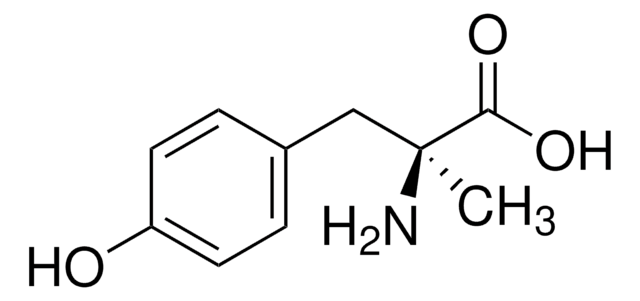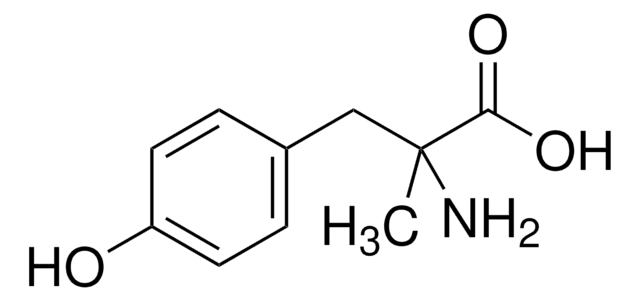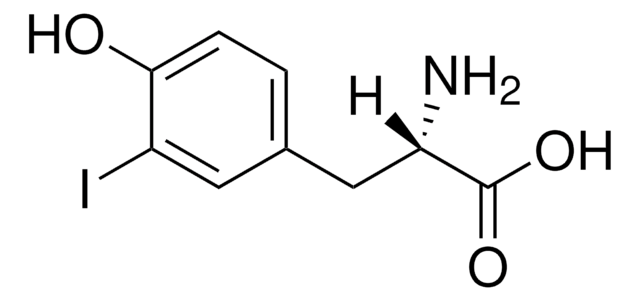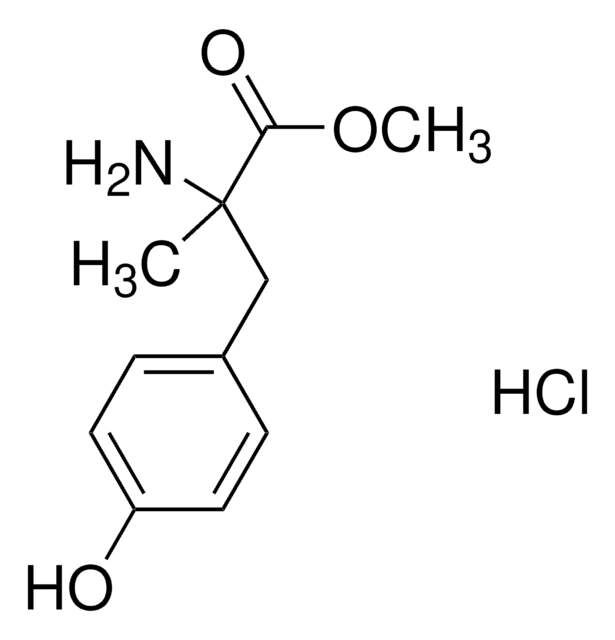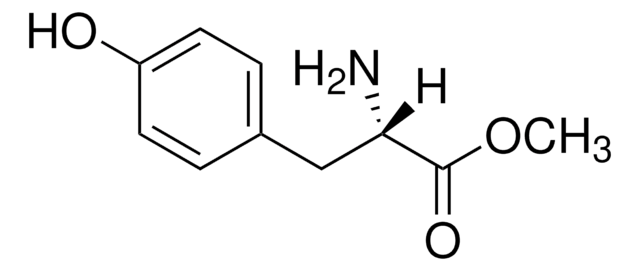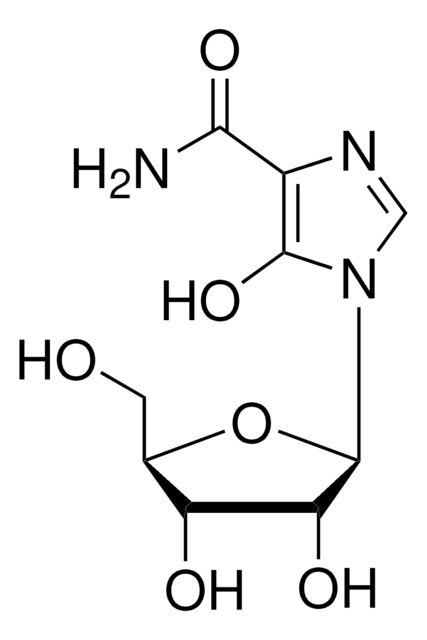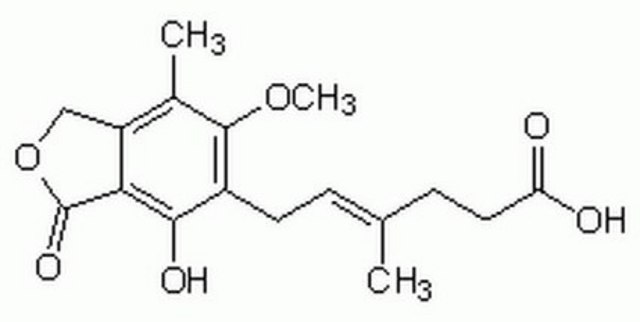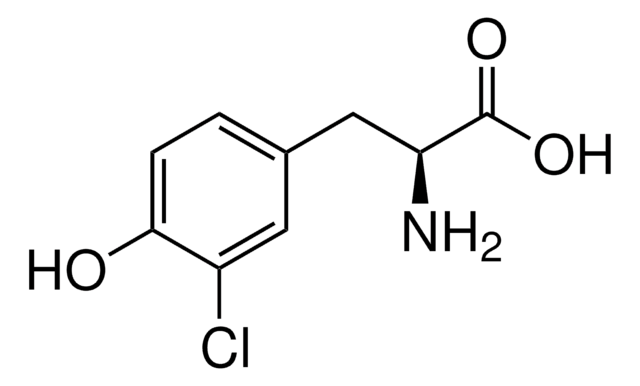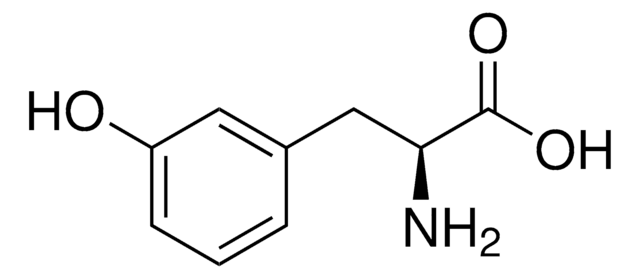M8131
α-Methyl-L-tyrosine
≥98% (TLC)
Synonym(s):
L-2-Methyl-3-(4-hydroxyphenyl)alanine, L-AMPT
About This Item
Recommended Products
Assay
≥98% (TLC)
form
powder
storage temp.
−20°C
SMILES string
C[C@](N)(Cc1ccc(O)cc1)C(O)=O
InChI
1S/C10H13NO3/c1-10(11,9(13)14)6-7-2-4-8(12)5-3-7/h2-5,12H,6,11H2,1H3,(H,13,14)/t10-/m0/s1
InChI key
NHTGHBARYWONDQ-JTQLQIEISA-N
Gene Information
human ... TH(7054)
Looking for similar products? Visit Product Comparison Guide
Application
- to test its effect during acute stress in zebrafish
- in cannabinoid receptor type-1 (CB1) knockout and wild type mice, to test its effect on norepinephrine turnover
- to test catecholamines depletion on stress in rat spleen samples
- to block dopamine synthesis in dopaminergic neurons
Biochem/physiol Actions
Other Notes
Storage Class Code
11 - Combustible Solids
WGK
WGK 3
Flash Point(F)
Not applicable
Flash Point(C)
Not applicable
Personal Protective Equipment
Choose from one of the most recent versions:
Certificates of Analysis (COA)
Don't see the Right Version?
If you require a particular version, you can look up a specific certificate by the Lot or Batch number.
Already Own This Product?
Find documentation for the products that you have recently purchased in the Document Library.
Our team of scientists has experience in all areas of research including Life Science, Material Science, Chemical Synthesis, Chromatography, Analytical and many others.
Contact Technical Service